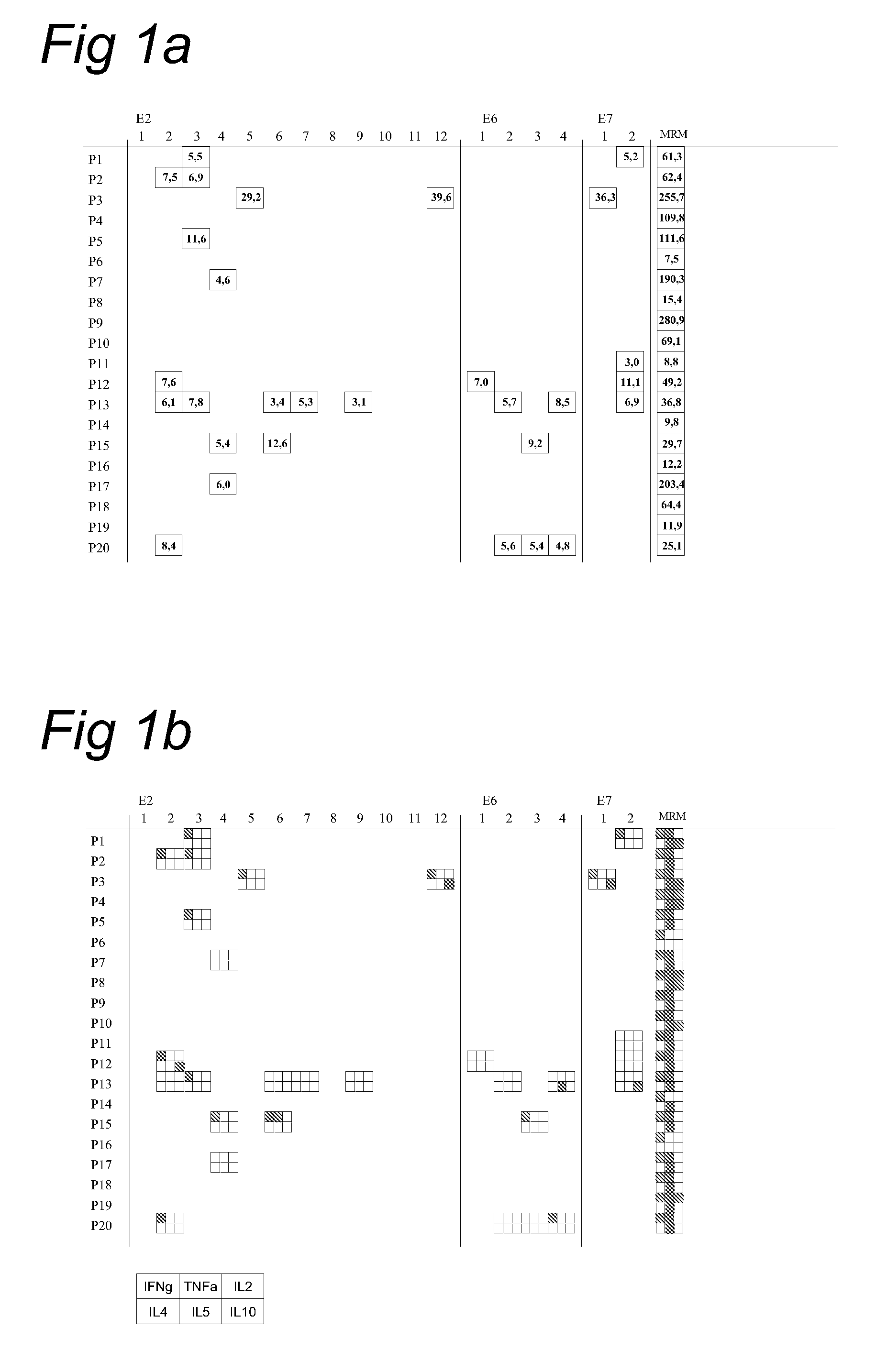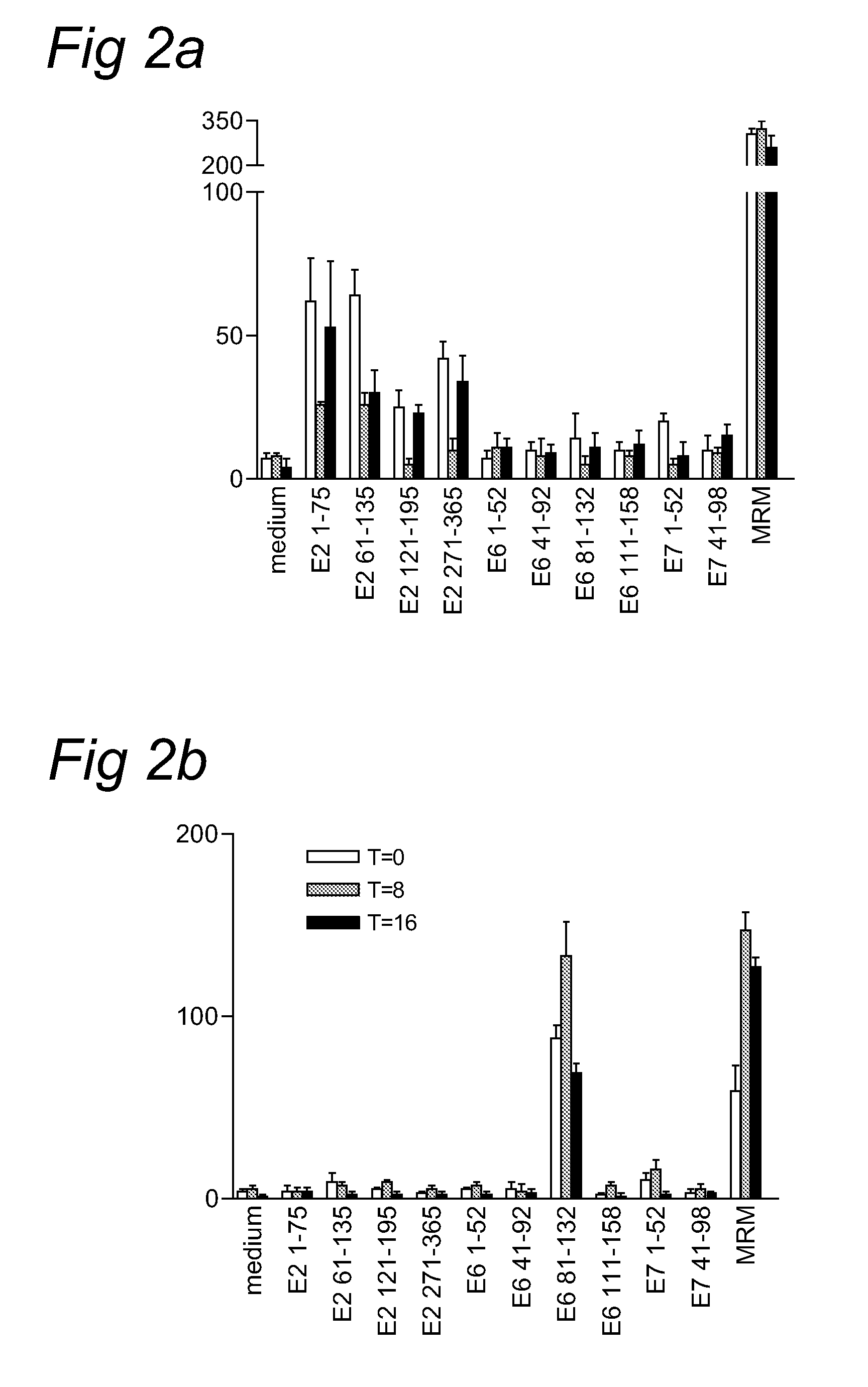Methods and means for the treatment of HPV induced intraepithelial neoplasia
a neoplasm and intraepithelial neoplasm technology, applied in the field of medicine, can solve problems such as significant psychosexual morbidity, and achieve the effects of favourable clinical response, optimal results, and effective treatmen
- Summary
- Abstract
- Description
- Claims
- Application Information
AI Technical Summary
Benefits of technology
Problems solved by technology
Method used
Image
Examples
example 1
[0048]HPV 16-specific cellular and humoral responses in patients with high grade VIN VIN forms a unique aspect of HPV-induced disease because patients are frequently treated, but the infection often persists. HPV-16 is found most often. To gain a more profound insight in the CD4+ T-cell response against HPV16 in VIN, we charted the magnitude, specificity and functionality of HPV16 E2, E6 and E7-specific proliferative T-cell responses in a group of 20 women with HPV16-associated high grade VIN.
[0049]PBMC isolated from VIN patients were stimulated with peptides derived from HPV16 proteins E2, E6 and E7 as well as with a mix of common recall antigens (MRM), in a short-term proliferation assay. We have previously shown that this assay is geared towards the detection of CD4+ T-cell responses (23). HPV16-specific proliferative T-cell responses against E2 and / or E6 were detected in 10 / 20 patients (FIG. 1A). E7-specific responses were detected in 5 / 20 subjects. Analysis of the supernatants ...
example 2
[0052]HPV16-specific immunity is associated with a more favorable clinical response upon immunomodulatory treatment with Imiquimod
[0053]Our analysis of HPV16-specific proliferation indicates that a high number of the proliferative T-cell responses is associated with IFNγ production. To examine the role of these HPV16-specific type 1 T cell responses in the success or failure of treatment with the immunomodulator imiquimod, we studied this immune response in a group of patients with high-grade HPV16+VIN. PBMC were isolated before (T=0), during (T=8), and after (T=16) treatment, and stored in liquid nitrogen. HPV-specific T-cell reactivity against HPV16 peptides E2, E6 and E7 was analyzed by IFNγ ELISPOT. This is a sensitive method for the analysis of antigen-specific type 1 T-cell reactivity on frozen material (32; 33). Three of these patients had been treated with imiquimod in the year before inclusion in our study (Table 2, #21, 24 and 27). Of these 17 patients, 15 were HPV16-posit...
PUM
| Property | Measurement | Unit |
|---|---|---|
| concentration | aaaaa | aaaaa |
| concentration | aaaaa | aaaaa |
| OD | aaaaa | aaaaa |
Abstract
Description
Claims
Application Information
 Login to View More
Login to View More - R&D
- Intellectual Property
- Life Sciences
- Materials
- Tech Scout
- Unparalleled Data Quality
- Higher Quality Content
- 60% Fewer Hallucinations
Browse by: Latest US Patents, China's latest patents, Technical Efficacy Thesaurus, Application Domain, Technology Topic, Popular Technical Reports.
© 2025 PatSnap. All rights reserved.Legal|Privacy policy|Modern Slavery Act Transparency Statement|Sitemap|About US| Contact US: help@patsnap.com



